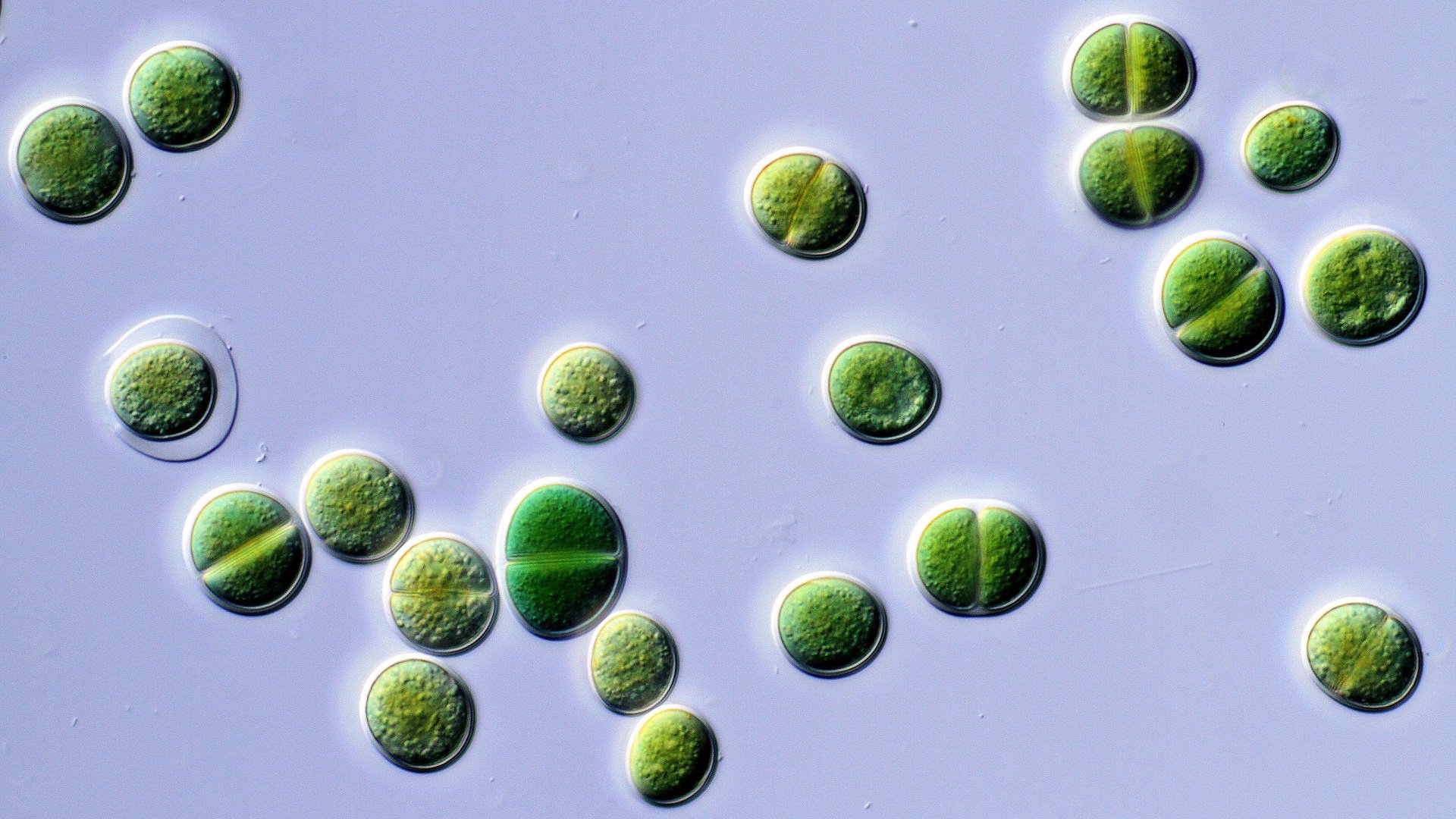Chroococci are large spherical cyanobacteria found in fresh water. The bacteria live within a mucus layer in groups of two, four or eight cells.
Chroococci are large spherical cyanobacteria found in fresh water. The bacteria live within a mucus layer in groups of two, four or eight cells.
Protected by a mucus layer
Chroococcus are egg to rod-shaped unicellular algae with a diameter of 0.4 to 40 µm. It is an autotrophic organism capable of surviving without oxygen. Chroococcus forms colonies of two, four or eight cells that are enclosed in a protective mucus layer. The mucus layers of different colonies stick together so that they can form a biofilm visible to the naked eye.
Phototrophile
Chroococci are cyanobacteria. These bacteria are also called blue-green algae because of their colour and lifestyle in the water. The name cyanobacterium refers to the colour cyan, a colour that many of these bacteria have because of pigments in the cell. Chroococcus, like other cyanobacteria, uses a lot of carbon dioxide during its photosynthesis.

